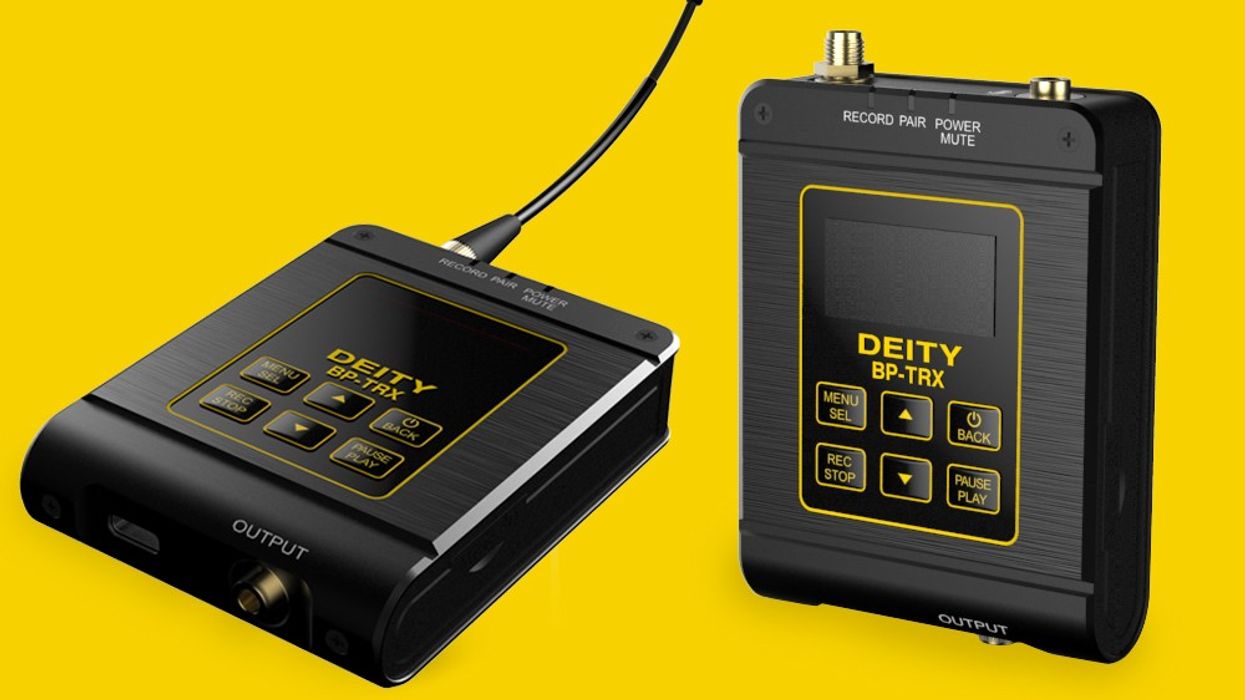Now Indies Can Record and Transmit Audio in the Same Device
Wireless audio transmission is a wonderful on-set tool, but with this new upgrade, independent filmmakers have access to a previously pricy feature: local backup and transmission.

Most filmmakers' first introduction to wireless on a film set is with audio. Long before we were beaming video around on set, the benefits of wirelessly streaming audio from a lavalier to a receiver mounted on a recorder have been allowing for increased flexibility on sets.
However, if you've ever worked in a busy RF environment or a large set, you've quickly realized the limitations of wireless audio. Other RF signals can cause interference, and if the performers move too far away, you can lose your audio signal altogether.
There are solutions to this on larger budget productions, but due to a new licensing agreement, you'll now have access to a great solution with the new Deity BP-TRX we covered a few months ago.
Units in the system will now be able to simultaneously transmit audio and at the same time record a copy locally.
What this means for users is that you'll have the ability to monitor all the audio being recorded at your mixing device, but if there is a dropout or interference, you'll have a local copy of that audio recorded at the source that you can go to as a backup.
Every time NFS shoots NAB, one of the frequent tasks is finding a clean audio signal for the wireless microphone. With this setup, which also would allow you to sync timecode, you can literally just record the audio locally to the transmitter as well as the camera-mounted receiver, and it'll all sync up pretty much automatically in post-production.
Another beneficial scenario is car work. When driving around, you regularly encounter interference you might not have in basecamp. This leads many sound recordists to set up in the trunk or back seat with hard-wired lavaliers to avoid dropouts, but this solution avoids that difficult, uncomfortable, and unsafe setup, since a recordist can set up in the follow car with confidence that if they hear dropouts in the wireless it's still being recorded locally.
Deity is able to do all this through a license agreement with Zaxcom, the first Zaxcom has granted for their patent on the technology.
Zaxcom released their TRX900 back in 2005, getting a patent on both recording and transmitting timecode audio. This is why until now no other manufacturer could offer this functionality. With this license Deity is the first, and definitely the first at an independent price point, to offer the option.
It's available for all BP-TRX users in North America starting with firmware 1.1, which was released in June.















